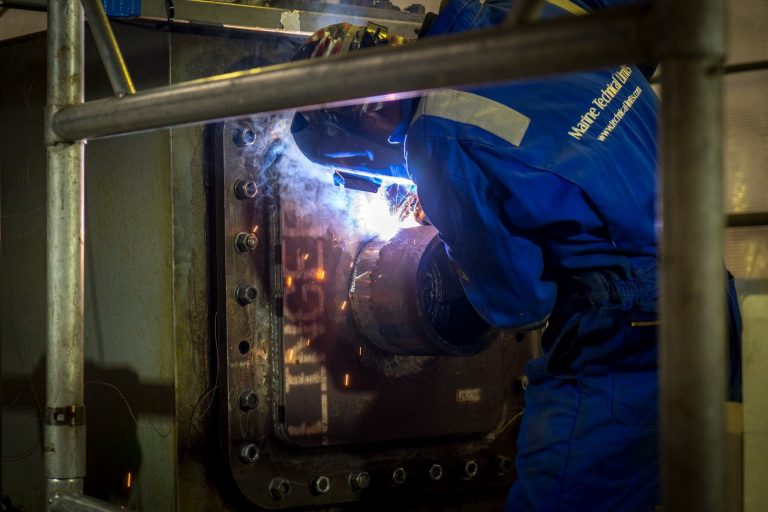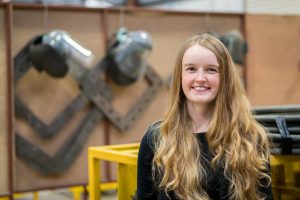Extensive research and in-house trials
MTL’s extensive research and in-house trials to better understand water backed welding.
AS AN FPSO AGES, an increasing number of defects can develop in the hull structure and defects found in areas below the waterline can be especially challenging to address.
As dry docking may not always be a financially viable option for fixing defects found below the waterline, alternative methods are highly sought after. Welding afloat with a water backing (referred to hereinafter as water backed welding) could be a solution to this problem, however, it is not a commonly used or well established welding process and there is limited Classification Society code guidance on this subject.
As a result, MTL have recently undertaken extensive research and in-house welding trials to better understand water backed welding and its associated challenges.
Water backed welding creates more challenging conditions compared to conventional welding processes.
At the same temperature, the water acts as a greater heat sink than air, which significantly increases the cooling rate of the weld. This rapid cooling results in a harder, more brittle weld that is not considered compliant with welding rules and standards.
Therefore, it is not possible to achieve a suitable weld without altering the welding process or introducing pre-heat, a process which is not allowable under some Classification Society rules during water backed weld procedure qualification.

Trials were undertaken using a bespoke welding test tank connected to an industrial water chiller unit, allowing the simulation of the conditions and flow rates found offshore. Water temperatures below 0°C were used to simulate the lowest temperature that would be encountered offshore during a repair. Throughout these trials, welding variables such as the welding process, position, technique used, consumable and steel composition, and environmental conditions were all examined to understand what impact they had on the weld quality.
By completing a full and thorough schedule of non-destructive and mechanical testing on each weld, we were able to obtain an understanding of what variables affect the weld quality during water backed welding. We also identified specific environmental control measures which are required to produce an acceptable water backed weld. By fine tuning the process and introducing specific controls for several variables, we were able to conduct successful welding trials which passed all non-destructive and mechanical testing requirements. We were able to achieve this without introducing pre-heat and therefore avoided introducing additional challenges to the process.
 With the knowledge we have gained through these water backed welding trials, we also took the opportunity to requalify some of our conventional weld procedures to align our welding consumables and processes, with all preparation and welding being undertaken in-house at our premises in Kintore. The qualifications covered both full penetration butt welds and fillet welds in a range of positions, again without the use of pre-heat. These were witnessed and approved in accordance with an internationally recognised welding standard, and also in compliance with a number of different Classification Society rules.
With the knowledge we have gained through these water backed welding trials, we also took the opportunity to requalify some of our conventional weld procedures to align our welding consumables and processes, with all preparation and welding being undertaken in-house at our premises in Kintore. The qualifications covered both full penetration butt welds and fillet welds in a range of positions, again without the use of pre-heat. These were witnessed and approved in accordance with an internationally recognised welding standard, and also in compliance with a number of different Classification Society rules.
By completing the research and trials in-house, we were able to gain a wealth of specialist knowledge of water backed welding as a company, along with a clear understanding of a large range of welding codes, allowing us to develop procedures that were more suited and tailored to our core business areas and project requirements.